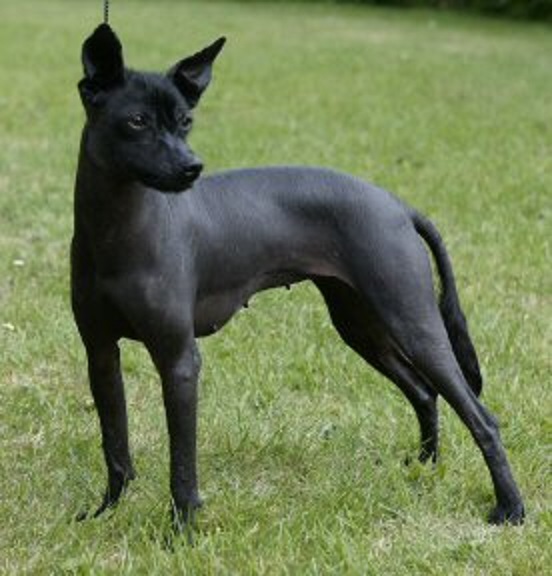
Xoloitzcuintli

Navigate through the tabs
Navigate through the tabs below to view the breed's info of your interest.
The breed's info is divided in four sections; namely:
the breed's history ,
the breed's main stats ,
the dog's potential health issues
and finally, how the breed scored in 26 different categories.
All the above information should give you a respectively good overview for the dog of your interest.
Dog Breed's Main Info
The Breed's History:
The Xolo is native to Mexico. Archaeological evidence shows that the breed has existed in Mexico for more than 3,000 years. Most likely, early forerunners of the Xolo originated as spontaneous hairless mutations of indigenous American dogs.
Hairlessness may have offered a survival advantage in tropical regions. Indigenous peoples of Mexico had Xolo dogs as home and hunting companions, and today they are still very popular companion dogs.
They are also the national dog of Mexico. Their value in ancient native cultures is evidenced by their frequent appearance in art and artifacts: for example, those produced by the Colima, Aztec and Toltec civilizations in Mexico.
Xolos were considered sacred dogs by the Aztecs (and also Toltecs, Maya and some other groups) because they believed the dogs were needed by their masters' souls to help them safely through the underworld. They were also useful companion animals.
According to Aztec mythology, the god Xolotl made the Xoloitzcuintli from a sliver of the Bone of Life from which all mankind was made.
Xolotl gave this gift to Man with the instruction to guard it with his life and in exchange it would guide Man through the dangers of Mictlan, the world of Death, toward the Evening Star in the Heavens. Some people in Mexico continue to believe this breed has healing qualities.
The Aztecs also raised the breed for their meat. Sixteenth-century Spanish accounts tell of large numbers of dogs being served at banquets. Aztec Merchant feasts could have 80-100 turkeys and 20-40 dogs served as food.
When these two meats were served in the same dish, the dog meat was at the bottom of the dish, either because it was held in higher regard or because it was increasingly considered a step above cannibalism.
The Aztecs consumed few domesticated animals like Xolos or turkey. Over 90% of the bones found at archeological sites are of deer that were hunted.
When Columbus arrived in the Caribbean in 1492, his journal entries noted the presence of strange hairless dogs. Subsequently, Xolos were transported back to Europe.
The breed is not well known in the United States. As a result, the Xolo has been mistaken for the mythical Chupacabras of Mexico.
The Xoloitzcuintli is the symbol of Club Tijuana, a Mexican professional football club.
Country of Origin:
Mexico
Breed Group:
Companion
Height:
1 foot, 6 inch. to 1 foot, 11 inch. (45,72 to 58,42 cm)
Weight:
10 pounds to 50 pounds (4,53 to 22,68 Kg)
Life Span:
14 to 20 years
Potential Health Issues:
Skin Problems
Adaptability
Apartment Living:
First Time Owners:
Sensitivity:
Being Alone:
Cold Weather:
Hot Weather:
Friendliness
Affection With Family:
With Kids:
With Dogs:
With Strangers:
Health and Grooming
Shedding:
Drooling:
Easy To Groom:
Overall Health:
Weight Gain Potential:
Size:
Training
Easiness:
Intelligence:
Mouthiness:
Prey Drive:
Barking or Howling:
Wanderlust:
Need For Exercise
Energy Level:
Intensity:
Exercise Needs:
Playfulness:
Our Mobile Application
Check out Our Mobile Application "Dog Breeds Central"
